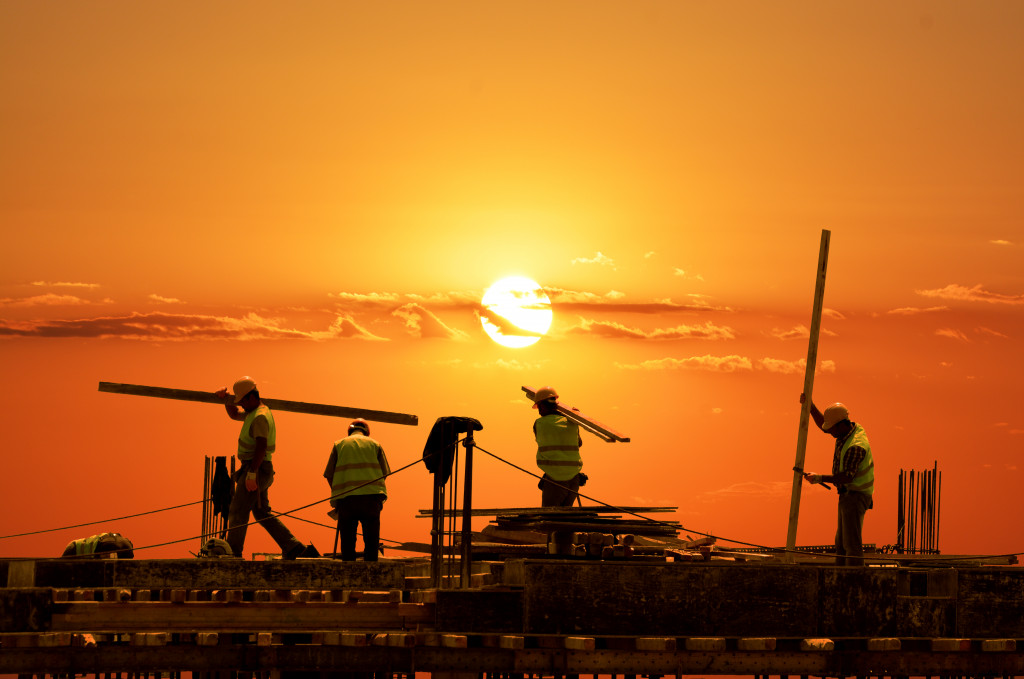Construction projects must keep moving. Workers usually take a break only once a week. Specific projects, like bridges, roads, and other public infrastructure, can’t afford delays, so workers can be seen on them 24/7. It’s normal for construction workers to render night shifts. The night shift is work started at 11 PM and ended at 6 AM. It cannot go beyond eight hours, or the workers could face more dangers and risks.
These dangers and risks include health issues, injuries, and accidents. Our bodies aren’t designed to be at work during ungodly hours. As such, night shift workers have an increased risk for mental health issues, metabolism issues, and other health conditions. They’re also more prone to work-related injuries because of the dim environment. And if they use heavy transport equipment, they’re more likely to meet road accidents because of lower visibility.
Incidents at work can significantly affect productivity. Hence, construction companies should take drastic measures to prevent them. By following these safety pointers, you can provide a better environment for your workers and ensure optimum productivity:
1. Promote a Healthy Pre-work Routine
When you assign night shift workers, don’t just assume that the younger workers are the best fit for the job. Instead, promote a healthy pre-night-shift routine. Then assign the workers who will follow this routine the night shift.
The ideal routine should go as follows:
- Sleep at least four hours before the shift.
- Eat a full meal after waking up.
- Choose foods with low-fat content to avoid discomfort while working.
- Take breaks in-between.
- Always wear proper protective gear while working.
You may not know if your workers follow this routine step-by-step, but you can observe their overall health by their work performance. If someone frequently files sick leaves, that could indicate an unhealthy lifestyle or a more serious health issue. Consider your workers’ pastimes as well. If someone often shows up at work drunk or high, they cannot be trusted with the night shift. Don’t give them the day shift either. Have a serious talk with them regarding their vices and see if they’d make changes.
2. Identify Safety Hazards
Before preparing a night shift plan, identify every safety hazard the workers encounter. The following are the common safety hazards on construction sites at night:
- Slip hazards (e.g., puddles)
- Trip hazards (e.g., protruding rocks, cracked concrete, equipment)
- Car glare
- Limited visibility
After identifying the safety hazards, develop measures to minimize them. For example, to prevent slipping, require your workers to wear company-issued non-slip boots at all times. Make your safety measures a policy so that you can make workers who didn’t follow them accountable. However, be open to possible inadequacies in your policies, too. Allow your workers to speak up if a policy affects their job or isn’t helpful enough. Chances are you’d make several changes before achieving the best safety policy.
3. Hear Your Workers’ Concerns

Before assigning anyone to the night shift, find out if they’d be willing to participate. You can’t force workers to work at night if they don’t want to. You’d like to hear these reasons for their refusal:
- Sleepiness and drowsiness
- Losing time with family
- Personal life matters
- Fear of sustaining injuries or meeting an accident
If a worker’s heart is not in it, their performance can be affected. For example, a heavy haul driver with their mind someplace else may not notice a pedestrian crossing the road. Or, they may not notice the traffic light beaming red. Hence, only assign workers who give their full attention to the work. You may need to focus on single workers, as they won’t have a family to give their time for.
4. Provide Adequate Safety Equipment
Aside from protective gear, provide safety equipment on the site, too. The biggest investment you should make is the lighting. There are three types of construction lighting, such as:
-
Light Towers
Light towers are an array of powerful lamps mounted on telescopic masts. They are usually mobile instead of fixed. Quality portable light towers are powered by generators and are highly reliable on-site.
-
Balloon Lighting
Balloon lights provide filtered lighting through a translucent fixture or “balloon.” They have less glare and can illuminate 360 degrees of an area. They’re best for tasks that shouldn’t be hindered by shadows.
-
High Mast Lighting
These are similar to light towers, but they are usually mounted to the ground. Floodlights are installed over the towering mast, providing illumination with reduced shadows. This improves the visibility of the site and any objects lying on the ground.
These pointers set the basis for a feasible night shift safety plan. Study each factor carefully and make your plan fit your company culture and workers’ needs. Most importantly, don’t forget to consider any legal implications of employing nighttime workers.

